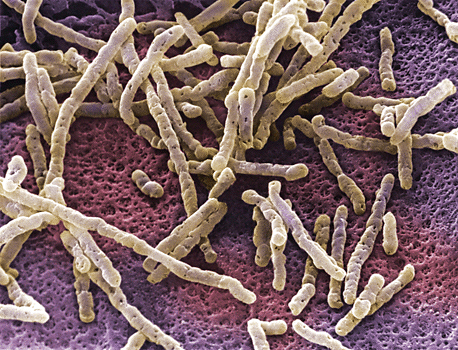New Gases Threaten Ozone Layer
Thursday, March 13th, 2014March 13, 2014
Four new chemicals that are almost certainly human made are threatening the recovery of the protective ozone layer in Earth’s upper atmosphere, according to scientists from the University of East Anglia in the United Kingdom. The origin of the gases, which were not in the atmosphere before the 1960′s, is unclear, but they appear to be coming from somewhere in the Northern Hemisphere. Even more worrisome, emissions of two of the gases seem to have risen in recent years.
Ozone is a gas that is present in small amounts in Earth’s atmosphere. In the troposphere (the lowest level of the atmosphere), ozone is a pollutant. However, in the stratosphere (the layer above the troposphere), ozone blocks harmful ultraviolet rays from the sun, protecting life on Earth.
In the 1970′s, scientists monitoring the atmosphere over Antarctica noticed that the ozone layer was becoming depleted (less concentrated) each spring. This area became known as the ozone hole. In 1985, researchers discovered that the ozone hole had grown since the 1960′s. That is, over the years, the area of low concentrations of ozone had become larger. In addition, the ozone concentrations had become smaller. Scientists soon linked the ozone hole to chemicals called chlorofluorocarbons (CFC’s). CFV’s were once widely used as refrigerants and as propellants in aerosol spray cans. The international community acted quickly to protect the ozone layer. In 2010, a total global ban on CFC production went into effect. But an ozone hole still occurs every year because of CFC molecules that remain in the atmosphere. Although atmospheric concentrations of ozone-damaging chemicals have fallen in recent years, the ozone hole was not expected to heal completely until at least 2050.

A false-color view shows the total ozone over the Antarctic pole on March 7, 2014. The purple and blue colors are where there is the least ozone, and the yellows and reds show where there is more ozone. (NASA/Goodard Flight Center)
Three of the newly discovered chemicals in the ozone layer are CFC’s. The fourth is a hydrochlorofluorocarbon (HCFC), which also damages atmospheric ozone. The British scientists reported that 82,000 short tons (74,000 tonnes) of the gases have been released into the atmosphere so far. Analyses of old, compact snow, known as firn, and modern air samples revealed that the gases have appeared in the past 40 to 50 years.
The scientists speculated that the new chemicals could be appearing because of loopholes in the Montreal Protocol, which banned most CFC’s. The treaty allows the use of extremely small amounts of CFC’s in the manufacture of certain insecticides and in solvents used to clean electronic equipment. However, the gas emissions could also be the result of illegal production. The scientists called on governments to identify the source of the gases so production can be halted immediately.
Additional World Book articles:
- Air pollution
- Greenhouse effect
- Rowland, Frank Sherwood
- Smog
- Environmental pollution (1988) (a Back in Time article)
- Environmental pollution (1990) (a Back in Time article)



